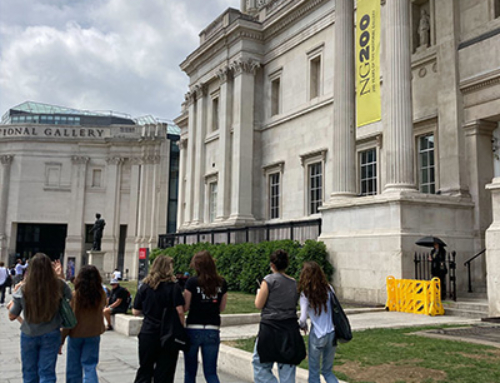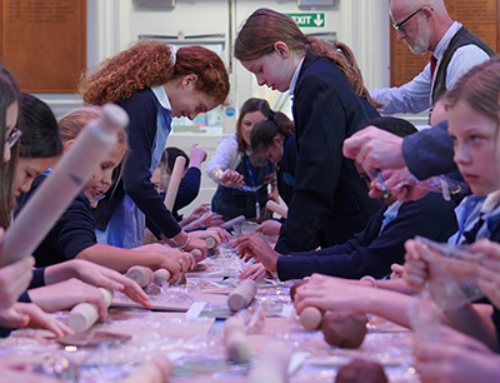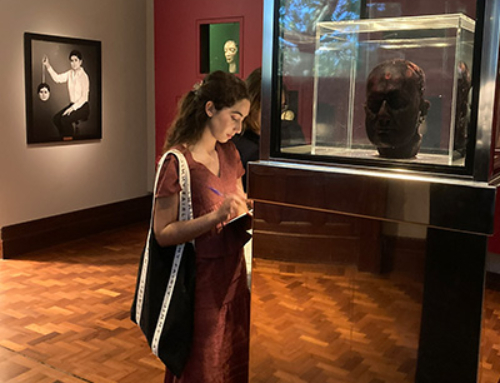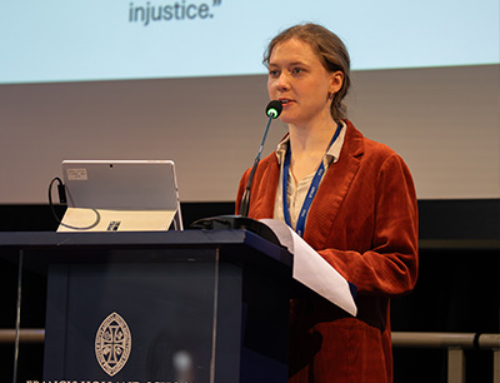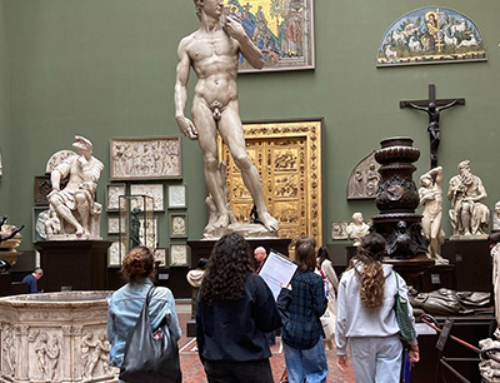This week, Ms Carr-Gomm looks at Hans Holbein the Younger’s ‘The Ambassadors’.
“At this point in our lock down term it seems a good idea to celebrate and evaluate learning and knowledge and look at one of the National Gallerys most popular paintings. Again its worth blowing up the image in their link to see all the details.
The two full length, life size Frenchmen painted here are representatives of the church and state and the friends were were painted together in England in a very precarious time in European history.
Jean de Dinteville, on the left, stands feet wide apart, hand on hip with his chest thrust forwards in a manly Henry VIII pose. He was a diplomat sent to the court of England by the French King, Francois I, just as Henry divorced Catherine of Aragon and married Anne Boleyn. He is sartorially in the height of fashion; he wears a black padded, puff-sleeved, lynx fur lined coat over a jerkin and a sumptuous pink satin shirt slashed so that more expensive material can be seen beneath. We are told, on the gold scabbard of his dagger, that he is in his 29th year.
On the right, a little less assured that his friend, is George de Selve who leans on a book that tells us that he is in his 25th year. He was Bishop of Lavaur and, too young to wear the robes of his position; instead, he has an extremely expensive, purply brown, fur lined coat. He visited London from April to June of 1533 when this painting must have been started and although the reason for his visit is not known, it was probably regarding his deep concern for the Catholic/Protestant division in Europe.
Between them are two shelves covered with objects. Dintville leans casually on the top shelf in front of a celestial globe. Beside it is are dials, a quadrant and a torquetum, all scientific, mathematical and astrological instruments with which distances and locations can be deduced. On the bottom shelf is a terrestrial globe and it can be no co-incidence that in the middle of the upside-down map of Europe is Dintvilles Chateau of Polisy to which he longed to return. There is a maths book kept open with a set square, and the dividers behind may refer to the art of architecture; a hymn book lies open in front of a lute. These objects represent the range of knowledge of these two erudite and highly educated men who were as up to date as the owners of an iPhone SE.
With these objects comes a hint of discord too, not between these friends but between England and France. The time pieces are set at different hours and so they are out of sync; the lute has a broken string seen straggling in the air; and the hymn book is Lutheran and written in German. The mosaic patterns on the floor are like those in Westminster Abbey which puts the figures in an ecclesiastic setting and, given that Holbein was German, it would be neat to think that this painting acknowledged and hoped to heal the rift that was tearing Europe apart.
Prominently in the foreground of the painting is an object that was once thought to be a cuttlefish bone though it was hard to explain what on earth it was doing there. It is, in fact, an anamorphic skull. Distorting objects was very fashionable and you can see an anamorphic portrait of Edward VI in the National Portrait Gallery:
https://www.npg.org.uk/collections/search/portrait/mw02032/King-Edward-VI
Holbeins skull takes shape when seen from below right which might have something to do with where the painting was hung. It is partly there to show off the skill of the artist but of course, its a momento mori, a reminder that however much we can understand and enjoy science and the arts, death is not far away. There is another skull as a tiny brooch in Dintvilles cap. The inevitability of death united Europe and for all Christian faiths there is salvation; here it is found in the tiny silver crucifix hiding behind the curtain at the very top left of the painting.”
Hans Holbein the Younger, The Ambassadors, 1533, oil on oak, 207 x 210 cm, National Gallery London



